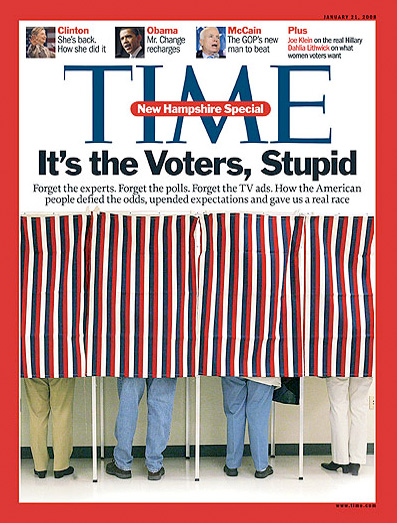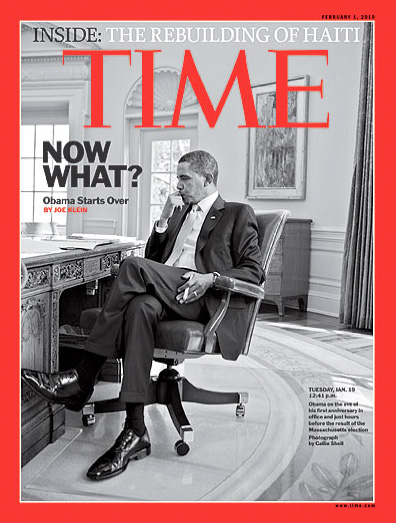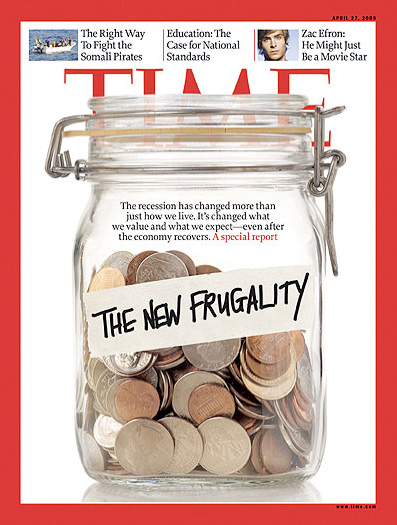By Nick Wright
Speaking of Time magazine....
The last paper I worked on staff at had a contract with AP Photos. Which meant that we would regularly send them stuff we'd shot. When I started working at this paper the AP still paid for stuff we'd send in, I think it was $15 per photo. About halfway through my tour of duty at that paper, the AP quit doing that in favor of creating a contest out of our submissions.
Well, color me surprised when in early 2008 I happened to look at the cover of Time sitting on one of our reporter's desks, and saw a photograph of mine staring back at me. I didn't even know it was going to be used. And of course I didn't see a dime from it.
Nick Wright's Time cover photograph, for which he was paid...nothing.
Not that it isn't an incredible feeling to be able to say "a photograph I shot made it on to Time's cover." But that was one of the key moments leading me to realize that the photography industry is in dire trouble, and that I was going to have to change something or get out.
So far, I'm just out. I quit that paper middle of 2008 and have been trying to figure out what I want to do with the rest of my life ever since. I tried the microstock thing, but the stuff I create doesn't sell. I tried portraits, etc., but I can't compete with WalMart. Oh well, things change.
Now I just shoot for myself.
Nick
Send this post to a friend
Note: Links in this post may be to our affiliates; sales through affiliate links may benefit this site. More...
"The Associated Press is a co-op made up of 'member' newspapers. The membership agreement (in most cases) stipulates that members will share their production with other member newspapers that they don't directly compete with.
"So if you were working for the Omaha World Herald and photographed a tornado in Iowa, the Washington Post would be allowed to print the photograph (after it was delivered to them via the A.P. network). The Des Moines Register however would probably be flagged as "out" as the OWH would consider them a competitor (in this situation).
"The $15 you were paid by the A.P. was not for licensing, but simply to encourage you to deliver the image to the wire service. This was an important consideration at one point, because the A.P. needed a physical print to transmit back in the ye old Laserphoto days. So the money was just a holdover from an earlier era. I'm not sure if they still do this or not, probably not.
"I'm sure TIme properly licensed the image from A.P.'s in-house stock agency Wide World Photos. This would have been one of the times that the Time $1750 cover licensing fee would have applied.
"So the money was paid; you just didn't see any of it.
"This is why the concept of the 'contract' photographer was invented. Unlike a staff photographer, a contract photographer retains ownership of their copyright.
"Unlike a staff photographer, a contract photographer doesn't get health insurance, stock options, office space, camera gear, a company vehicle, or any of the other financial rewards that come along with a staff job. Plus, contracts were assigned on a yearly basis and could be terminated at any time.
"So there's your trade-off. The comfort and security of a staff job (well, at one point, but not so much anymore), or retaining ownership of your work and the ability to profit from that ownership in the future (well at one point, but not so much anymore)."






